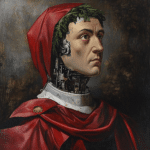A Journey Through Time Beneath the City
Thessaloniki’s new metro system is more than just a modern transit marvel—it’s an underground museum that invites commuters to explore the city’s rich historical tapestry. Officially opened on Saturday, the metro stations are home to ancient artifacts unearthed during the project’s construction, offering passengers a unique blend of modern convenience and historical wonder.
Unearthing Thessaloniki’s Treasures
Construction on the Thessaloniki metro began in 2006 but faced delays as workers discovered significant archaeological finds, including a Byzantine-era market and a Roman cemetery. These treasures showcased the city’s history and challenged the project’s timeline.
“This is not just a public works project, which is incredibly important for the city. It is also a museum,” remarked Greek Prime Minister Kyriakos Mitsotakis. He described the metro as a journey through an underground museum to reach the train.
A Unique Approach to Preservation
The solution to balancing progress and preservation was innovative: incorporating the artifacts into the design of the metro stations. Commuters can now admire the historical relics displayed at Venizelou station and others, turning everyday travel into an educational experience. Builders even dug as deep as 31 meters (102 feet) to ensure the tunnels bypassed archaeological sites, safeguarding the integrity of these finds.
A Testament to Perseverance Amid Challenges
The project faced more than just archaeological hurdles. Thessaloniki’s metro took nearly two decades to complete, partly due to financial struggles during Greece’s debt crisis from 2009 to 2018. Despite the setbacks, the metro represents a milestone as the first system outside Athens, enhancing connectivity in Greece’s second-largest city.
A Debate Over Artifact Relocation
While many celebrate the metro’s dual role as transit and museum, not everyone agrees with the decision to move the artifacts. Melina Paisidou, one of the archaeologists involved, voiced concerns about displacing relics from their original context.
“It is an opportunity for Thessaloniki to become a second Rome, in terms of antiquities,” Paisidou noted, highlighting the city’s potential to rival other historical capitals.
A Future of Cultural and Urban Growth
Thessaloniki’s metro is more than a transportation upgrade; it symbolizes resilience and innovation. Integrating ancient artifacts into its stations showcases how a city can honor its past while looking forward. As Thessaloniki grows, the metro is a testament to the harmonious coexistence of history and modernity.
Thessaloniki’s new metro isn’t just a transit system; it’s a gateway to the past. The city has set a global example of preservation and progress by blending ancient relics with cutting-edge design. Commuters traverse this underground museum and embark on a daily journey through history.

